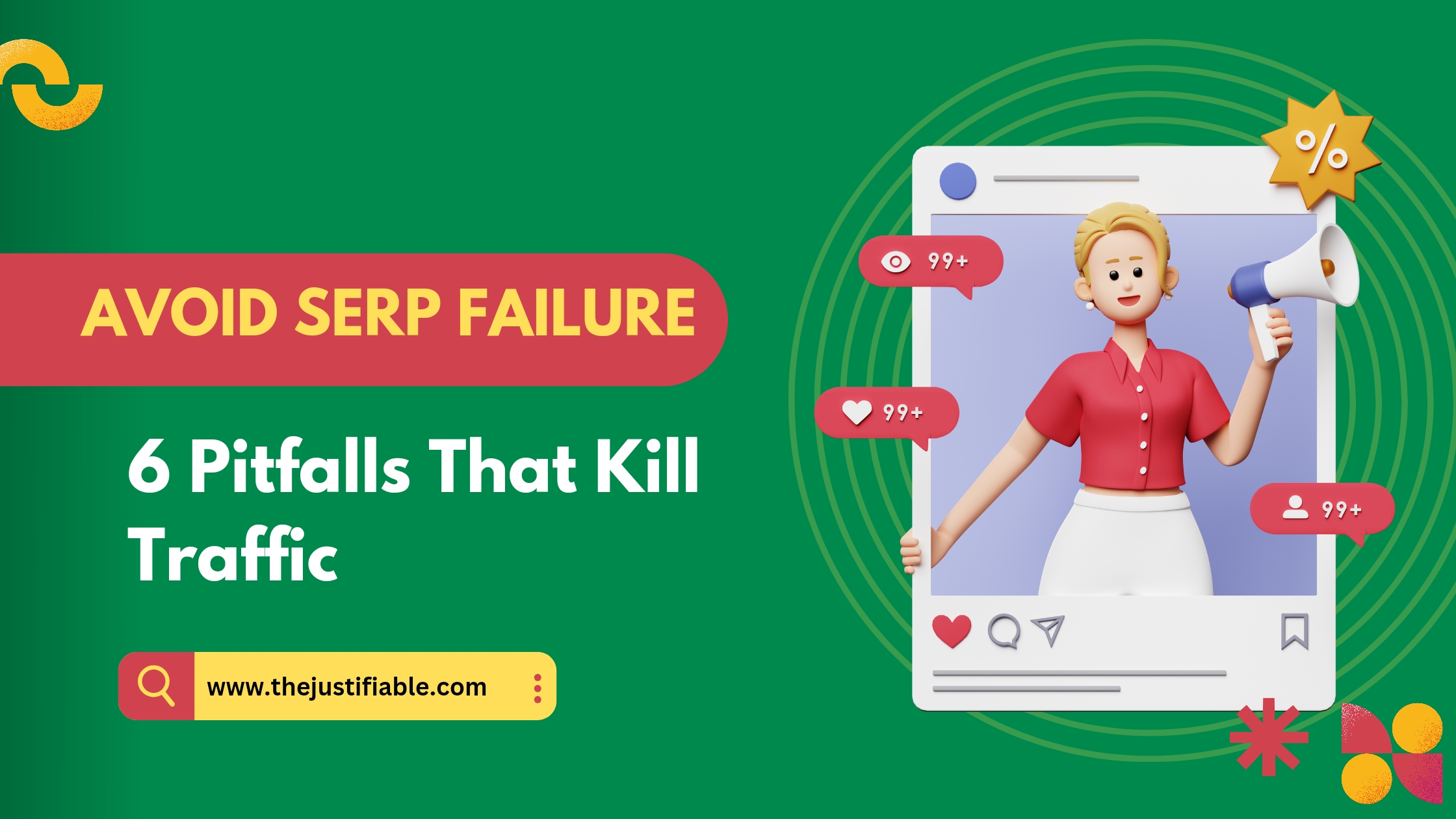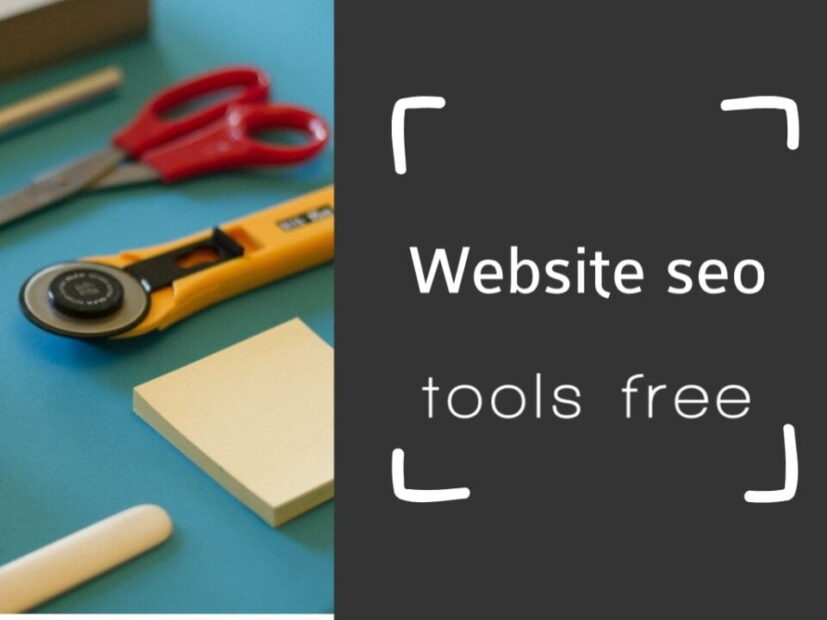Table of Contents
SERP – ever wondered how crucial it is for your digital presence? Or perhaps, how its mastery could be the cornerstone of your online success? Let’s delve into the significance of Search Engine Results Pages (SERP) and uncover strategies to avoid common pitfalls that can detrimentally impact your website’s traffic.
Why SERP Matters in Today’s Digital Age
Have you ever stopped to think about the impact of SERP on your digital endeavors? In my opinion, its importance cannot be overstated. With the majority of internet experiences beginning with a search engine, securing a top position in SERP is essential for visibility, credibility, and ultimately, success.
From my perspective, SERP is the digital world’s prime real estate. Being prominently listed on a search engine results page signals to your audience that your content is not only relevant but also authoritative. It’s a testament to your site’s quality and reliability, which, in turn, fosters trust with your audience. In my estimation, this trust is invaluable in building a loyal customer base.
Moreover, I believe that the implications of SERP extend beyond mere visibility. It’s about capturing the right kind of traffic—users genuinely interested in what you have to offer. According to recent studies, websites ranking at the top of search results garner a significantly higher click-through rate than those positioned lower. This, in my view, highlights the direct correlation between SERP rankings and traffic quality and quantity.
SEO Services Recommendations
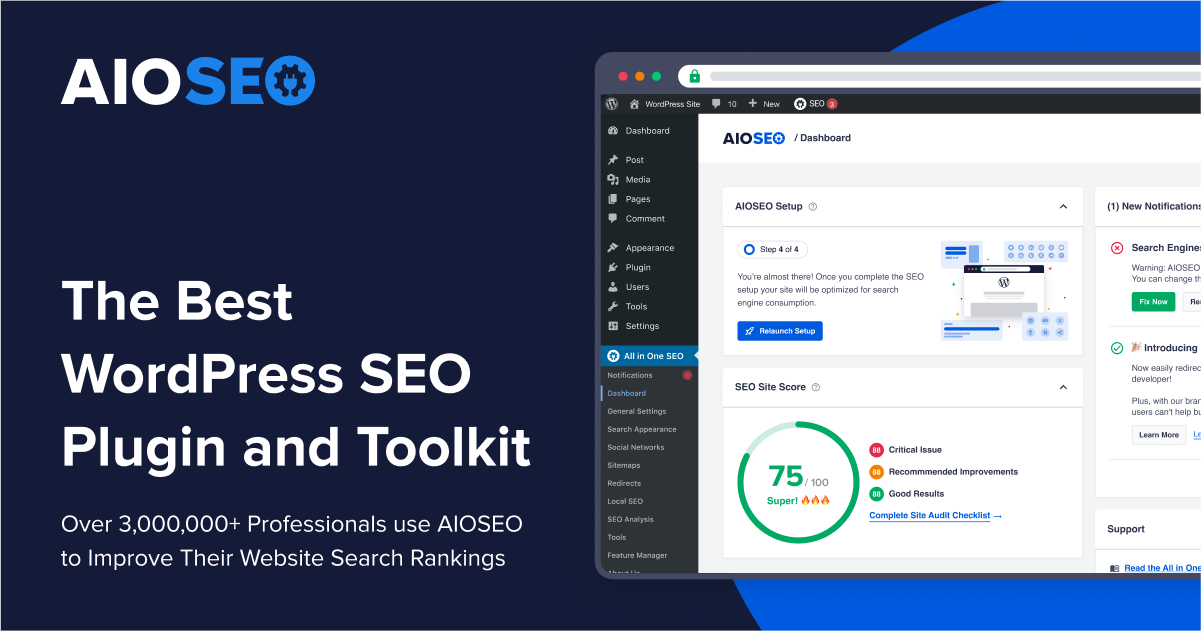 AIOSEO
| 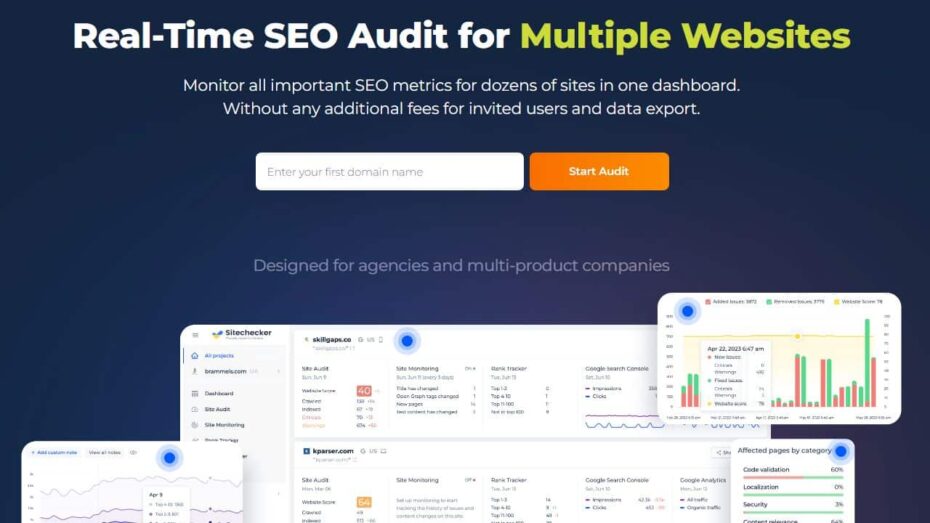 Sitechecker
| 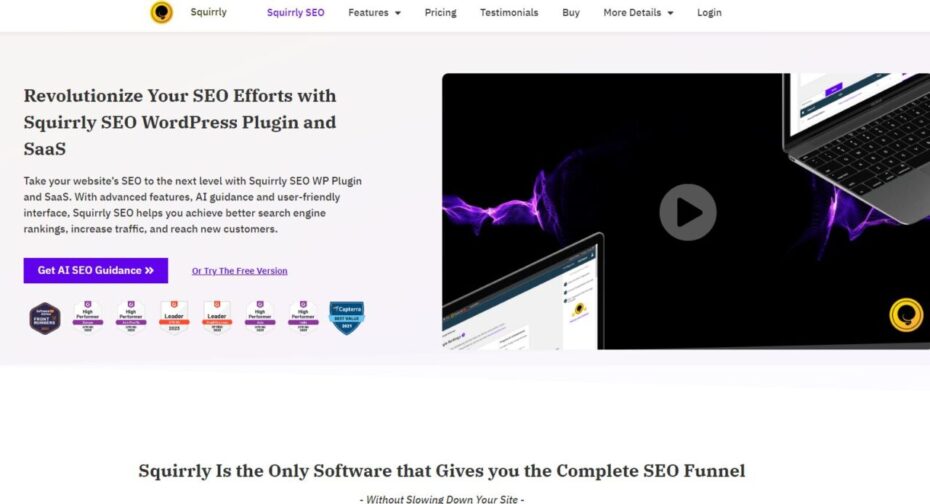 Squirrly
|
The Impact of SERP Rankings on Your Website Traffic
In my honest opinion, the influence of SERP rankings on website traffic is monumental. A high ranking not only boosts visibility but also increases the likelihood of engagement, conversions, and, ultimately, revenue. It’s a ripple effect that starts with how easily your audience can find you.
Speaking personally, I’ve observed that websites positioned at the top of search results tend to receive a lion’s share of traffic. This is no coincidence. Users typically click on the first few results, perceiving them as the most relevant and authoritative. In my experience, this user behavior underscores the critical importance of aiming for the top spots in SERP.
Lastly, from my point of view, the quality of traffic generated through superior SERP rankings is unmatched. These are users actively searching for information or solutions that your website offers. My recommendation? Focus on optimizing your content and site structure to meet the specific needs and intents of your target audience. This strategic approach not only improves your SERP rankings but also ensures that the traffic you attract is more likely to convert.
By navigating the complexities of SERP with a strategic and informed approach, you’re setting the stage for enhanced visibility, engagement, and growth. Remember, in the dynamic world of digital marketing, staying informed and adaptable is key to success.
Pitfall #1: Ignoring Mobile Optimization
“Mobile optimization is no longer about having a mobile-friendly website. It’s about creating an experience that amplifies user satisfaction.” In today’s digital landscape, ignoring mobile optimization is akin to turning away potential visitors. SERP success is significantly influenced by how well your site caters to mobile users, not just in terms of aesthetics but functionality and speed as well.
From my perspective, mobile optimization is a critical component of your website’s success. As more people use mobile devices to access the internet, your site’s mobile responsiveness directly impacts its visibility and ranking on search engines. A mobile-friendly website is no longer an option but a necessity. This is not just about scaling your site to fit various screen sizes; it’s about ensuring a seamless and engaging user experience on all devices.
I strongly believe that the absence of mobile optimization can severely hinder your website’s ability to attract and retain traffic. Search engines, like Google, prioritize mobile-optimized sites in their rankings. This means that a non-optimized site is less likely to appear in top search results, thereby missing out on valuable traffic. My recommendation? Prioritize mobile optimization in your SEO strategy to enhance user experience and boost your SERP rankings.
How Mobile-First Indexing Affects Your SERP Rankings
“Mobile-first indexing means Google predominantly uses the mobile version of the content for indexing and ranking.” This shift underscores the importance of mobile optimization in determining your website’s position in SERP. It’s a clear signal that the mobile version of your website is not just an alternative but the primary version for both users and search engines.
In my opinion, the transition to mobile-first indexing is a pivotal moment in SEO. It means that the content, speed, and user experience of your mobile site can directly influence your overall search rankings. If your mobile site is lacking in content or functionality compared to your desktop site, you could be inadvertently sabotaging your SERP performance. This change places a premium on developing a robust, content-rich mobile site that doesn’t compromise on user experience.
According to experts, adapting to mobile-first indexing is crucial for maintaining and improving your SERP rankings. This includes ensuring that your mobile site mirrors the content of your desktop site, optimizing site speed, and enhancing usability for a smaller screen. From my point of view, adapting to this change is not just about avoiding penalties but seizing an opportunity to outperform competitors who are slow to adapt. Implementing a mobile-first approach to your website design and content strategy is now essential for SERP success.
3 Steps to Ensure Your Site Thrives in a Mobile-First World
Prioritize Responsive Design: Responsive design ensures your site is accessible and user-friendly across all devices. I recommend adopting a fluid grid layout that adjusts to various screen sizes, making your website appealing and functional on smartphones, tablets, and desktops alike. This is the foundation of a mobile-first strategy, ensuring that no matter the device, your site delivers a consistent and engaging user experience.
Optimize Page Speed: In a mobile-first world, page speed is paramount. Users expect fast loading times, especially on mobile devices. I suggest leveraging tools like Google’s PageSpeed Insights to identify and rectify potential speed issues. This may involve compressing images, leveraging browser caching, or minimizing code. Improving your site’s loading time is not just about enhancing user experience but also boosting your SERP rankings, as search engines favor fast-loading sites.
Enhance Mobile Usability: Finally, focusing on mobile usability is key. This includes designing for touch, with larger buttons and easily navigable menus, and ensuring text is readable without zooming. From my point of view, creating an intuitive mobile user experience is critical. It’s about understanding and designing for the mobile user’s journey, which can significantly differ from that of a desktop user. Implementing these changes not only supports your SERP rankings but also contributes to higher engagement and conversion rates.
By addressing these three areas, you can ensure your site not only survives but thrives in a mobile-first world. It’s a continuous process of optimization and adaptation, but the rewards in terms of SERP performance and user engagement are well worth the effort.
Pitfall #2: Neglecting High-Quality Content
Did you know that websites with high-quality, engaging content have a significantly lower bounce rate than those without? In the realm of SEO, content is king. Yet, one common pitfall that many businesses fall into is neglecting the creation of high-quality content. This oversight can severely impact your website’s SERP rankings and, by extension, its visibility and traffic.
From my perspective, the importance of investing in high-quality content cannot be overstated. Quality content is what engages your audience, holds their attention, and encourages them to explore your site further. It’s not just about filling pages with keywords; it’s about delivering value that meets the needs and interests of your audience. In my experience, websites that prioritize meaningful, well-researched content tend to perform better in search engine rankings because they are more likely to be shared, linked to, and revisited.
Furthermore, I believe that neglecting content quality can have long-term detrimental effects on your brand’s reputation and authority. High-quality content establishes your site as a credible source of information, which is crucial for building trust with your audience. My recommendation is to focus on creating informative, engaging, and original content that resonates with your target demographic. This approach not only enhances your SERP performance but also fosters a loyal following.
The Power of Engaging Content in Boosting SERP Positions
Engaging content is a powerful tool in the arsenal of any website looking to climb the SERP rankings. It’s a well-known fact that search engines favor content that engages and satisfies users. But what makes content truly engaging? It’s the ability to capture and hold the attention of readers, providing them with value that encourages interaction, sharing, and return visits.
In my view, the key to creating engaging content lies in understanding your audience’s needs and interests. This involves conducting thorough research to uncover the topics that matter most to them and presenting these topics in an interesting, accessible way. I recommend incorporating a mix of formats, such as videos, infographics, and interactive elements, to cater to diverse preferences and enhance engagement.
According to industry studies, engaging content significantly increases the time users spend on your site, which is a positive signal to search engines. This increased engagement translates into better SERP positions over time, as search engines aim to reward sites that offer a superior user experience. From my perspective, investing in engaging content is not just beneficial for your SEO strategy; it’s essential for building meaningful connections with your audience.
5 Types of Content That Skyrocket Your SERP Rankings
How-to Guides and Tutorials: In my experience, how-to guides and tutorials are incredibly effective in attracting and retaining audience attention. They provide practical value by helping readers solve specific problems or learn new skills, making them highly shareable and likely to earn backlinks.
In-depth Articles and Blog Posts: I strongly believe in the power of long-form content to enhance SERP rankings. Detailed articles that delve into a topic provide comprehensive insights, demonstrating your authority and expertise. This type of content tends to rank well for relevant keywords and attracts quality backlinks.
Infographics and Visual Data: From my point of view, infographics are a standout content type for boosting SERP positions. They present information in an easily digestible and visually appealing format, making complex data accessible at a glance. Infographics often receive a high level of shares and can drive traffic back to your site.
Interactive Content: Interactive quizzes, surveys, and tools engage users by offering personalized results or insights. I recommend incorporating interactive elements into your content strategy to boost engagement and encourage users to spend more time on your site.
Case Studies and Success Stories: In my opinion, case studies and success stories are incredibly persuasive. They provide real-world examples of how your products or services have helped others, building credibility and trust. This type of content not only supports your SERP strategy but also aids in conversion optimization.
Pitfall #3: Overlooking Keyword Research
Imagine navigating a vast ocean without a compass; that’s akin to ignoring keyword research in your SEO strategy. This critical step is often overlooked, leading many websites into the abyss of SERP obscurity. Keyword research is the compass that guides your content strategy, ensuring you’re not only visible but also relevant to your target audience’s searches.
From my point of view, the importance of thorough keyword research cannot be overstated. It’s the foundation upon which effective SEO strategies are built. By understanding the terms and phrases your target audience is searching for, you can tailor your content to meet their needs, interests, and questions. This alignment between your content and user intent is crucial for improving your website’s visibility and SERP rankings. I strongly believe that overlooking this step can lead to wasted efforts and resources, as your content may fail to reach its intended audience.
Moreover, keyword research helps in identifying niche topics and areas where you can truly excel and outperform competitors. It’s not just about targeting high-volume keywords but finding those unique opportunities where your content can shine. My recommendation is to invest time and effort in comprehensive keyword research before diving into content creation. This proactive approach ensures that every piece of content has a clear purpose and is aligned with your audience’s search behavior, significantly enhancing your SERP success.
Unlocking SERP Success with Strategic Keyword Selection
Strategic keyword selection is like finding the right keys to unlock a treasure chest of SERP success. It involves not just identifying popular terms, but also understanding the nuances of your audience’s search intent and the competitive landscape. By carefully selecting keywords that resonate with your audience and are achievable for your site’s authority, you can significantly improve your visibility and ranking on search engine results pages.
In my experience, the key to strategic keyword selection lies in balance. Targeting only the most competitive keywords can be an uphill battle, especially for newer or smaller websites. Conversely, focusing solely on low-competition keywords might limit your traffic potential. I recommend a mix of both, along with a keen eye on relevance and search intent, to create a diversified and robust SEO strategy. This approach ensures a steady increase in visibility and traffic, laying a solid foundation for long-term SERP success.
Furthermore, it’s crucial to regularly review and adjust your keyword strategy. Search trends and behaviors evolve, and what works today may not be as effective tomorrow. From my perspective, staying adaptable and responsive to these changes is essential for maintaining and enhancing your SERP positions. By continually refining your keyword selection based on performance data and market trends, you can ensure your content remains relevant and competitive in the ever-changing landscape of search engine optimization.
The Role of Long-Tail Keywords in Enhancing Your SERP Visibility
Long-tail keywords are the hidden gems of SEO, offering a path to visibility for many websites competing in crowded niches. These longer, more specific phrases typically have lower search volumes but higher conversion rates, as they cater to users with more defined intents. Incorporating long-tail keywords into your content strategy can significantly enhance your SERP visibility by targeting the specific needs and questions of your audience.
In my view, the beauty of long-tail keywords lies in their specificity and relevance. They allow you to create highly targeted content that directly addresses the concerns and interests of a specific segment of your audience. This level of precision not only improves your chances of ranking well in search results but also increases the likelihood of attracting visitors who are further along in the buying cycle. I suggest leveraging long-tail keywords to capture niche markets and drive more qualified traffic to your site.
Most importantly, long-tail keywords can be a game-changer for content that struggles to rank for more generic, competitive terms. By focusing on these specific phrases, you can carve out a unique space in the SERP landscape, even if your website is relatively new or has lower domain authority. My recommendation is to incorporate long-tail keywords into a comprehensive content strategy that also includes broader terms, ensuring a well-rounded approach to SEO that maximizes visibility across a wide spectrum of search queries. This strategic use of long-tail keywords can be a pivotal factor in enhancing your SERP visibility and overall digital marketing success.
Pitfall #4: Failing to Improve Site Speed
While it’s true that content is king in the realm of SEO, we cannot overlook the kingdom in which it resides: website performance, particularly site speed. Many businesses underestimate the impact of site speed on their overall SERP performance, focusing instead on content creation and keyword optimization. However, in today’s fast-paced digital environment, speed is not just a luxury; it’s a necessity for both user satisfaction and search engine rankings.
From my perspective, the first step in addressing this pitfall is to conduct a thorough audit of your website’s current performance. Tools like Google’s PageSpeed Insights can provide invaluable insights into how your site measures up against speed benchmarks and offer specific recommendations for improvement. I strongly believe that even small adjustments, such as optimizing images or minimizing CSS and JavaScript, can have a significant impact on your site’s loading times, thereby enhancing its SERP rankings.
Moreover, improving site speed is crucial for maintaining a competitive edge. Users have increasingly short attention spans and high expectations for digital experiences. A delay of just a few seconds can lead to increased bounce rates and lost opportunities for engagement and conversion. My recommendation is to prioritize site speed optimizations as part of your ongoing SEO strategy. This not only benefits your search engine rankings but also improves user engagement, which in turn can lead to higher conversion rates and customer satisfaction.
Speed Wins: Boosting SERP Rankings by Accelerating Your Site
In the race for SERP dominance, speed is indeed a winning factor. Search engines, particularly Google, have made it clear that site speed is a key ranking signal. This means that faster sites have a better chance of ranking higher than their slower counterparts. The rationale is straightforward: search engines aim to provide the best possible user experience, and fast-loading websites contribute significantly to that goal.
From my view, optimizing your site’s speed should be seen as an ongoing commitment rather than a one-time fix. Technological advancements and changing user expectations mean that what qualifies as ‘fast’ today may not suffice tomorrow. I recommend implementing a continuous optimization strategy that includes regular monitoring and updates to keep pace with best practices and technological innovations. This proactive approach ensures that your site remains fast, efficient, and competitive in the SERP rankings.
Additionally, it’s important to understand the technical aspects that contribute to site speed, such as server response time, resource loading strategies, and the impact of third-party scripts. My suggestion is to work closely with your web development team to identify and address these factors systematically. By focusing on both the front-end and back-end aspects of your website, you can achieve significant improvements in site speed, thereby boosting your SERP rankings and providing a better experience for your users.
How Site Speed Influences User Experience and SERP Performance
The connection between site speed, user experience, and SERP performance is undeniable. Fast-loading websites not only rank better on search engines but also provide a more satisfying experience for visitors. This dual benefit is crucial in today’s competitive digital marketplace, where user satisfaction can directly influence your website’s success.
In my estimation, the impact of site speed on user experience cannot be overstated. Users expect websites to load quickly and efficiently, with studies showing that a delay of even a second can lead to significant drops in page views, customer satisfaction, and conversions. This expectation extends across all devices, emphasizing the need for speed optimization not just for desktop but for mobile experiences as well.
Furthermore, I believe that site speed is a reflection of your brand’s commitment to excellence and respect for the user’s time. A fast-loading site sends a positive signal to visitors, enhancing their perception of your brand and increasing the likelihood of engagement and conversion. My advice is to view site speed optimization as an integral part of your user experience strategy. By doing so, you not only improve your SERP performance but also build a stronger, more positive relationship with your audience.
Pitfall #5: Skipping Meta Tags and Descriptions
It might come as a surprise to some, but meta tags and descriptions play a pivotal role in the success of your website’s SERP rankings, yet they are often overlooked. These snippets of HTML code might seem insignificant at first glance, but they are your first opportunity to engage potential visitors from the search results page. Skipping them is like publishing a book without a title or summary; it significantly diminishes the chances of attracting readers.
From my perspective, meta tags and descriptions serve as a direct communication channel with search engines and potential site visitors. They help search engines understand the content of your pages and display this information to users in search results. Crafting concise, relevant meta descriptions can influence a user’s decision to click through to your site. In my opinion, overlooking this aspect of SEO is a missed opportunity to improve both visibility and click-through rates.
Moreover, meta tags and descriptions offer a unique opportunity to incorporate target keywords naturally, enhancing your page’s relevance to specific search queries. I recommend viewing them as an integral part of your SEO strategy. Well-crafted meta tags and descriptions can not only boost your SERP performance but also improve user engagement by providing a clear, enticing preview of your page content. This dual benefit underscores the importance of paying attention to these often-neglected elements of website optimization.
The Underrated Heroes of SERP: Meta Tags and Descriptions
Meta tags and descriptions are the unsung heroes of the SERP battlefield. Despite their behind-the-scenes role, they wield significant power in influencing search engine rankings and user engagement. These concise pieces of text can make or break a user’s decision to visit your site. It’s a fascinating aspect of SEO that combines the art of persuasive writing with the science of search engine algorithms.
I think the power of meta tags and descriptions lies in their ability to provide a snapshot of your webpage’s content. This snapshot not only helps search engines index your site more effectively but also captures the interest of potential visitors. It’s about striking the right balance between including relevant keywords for search engines and creating engaging content for users. In my estimation, optimizing these elements can lead to a noticeable improvement in your website’s SERP performance.
Furthermore, it’s important to note that meta tags and descriptions should be unique for each page. This specificity ensures that search engines can accurately match user queries with your content. My recommendation is to craft these snippets carefully, considering both their SEO value and their impact on user experience. By doing so, you can maximize their potential to attract more traffic and enhance your site’s visibility in search engine results.
Crafting Compelling Meta Descriptions for Higher Click-Through Rates
Creating compelling meta descriptions is an art form that requires a delicate balance between clarity, relevance, and persuasion. A well-crafted meta description acts as an advertisement for your webpage, enticing users to click through from the SERP. It’s your chance to make a strong first impression, highlighting the unique value proposition of your content in a few short sentences.
From my perspective, the key to crafting effective meta descriptions is to focus on the user’s intent. Understand what they are looking for and how your content addresses their needs. This approach not only improves your page’s relevance in the eyes of search engines but also increases the likelihood of a click-through. I suggest including a clear call-to-action within your meta description. Phrases like “Learn more,” “Get started,” or “Discover” can motivate users to take the next step.
Most importantly, while it’s essential to incorporate target keywords naturally, avoid the temptation to stuff your meta descriptions with keywords. This practice can detract from the readability and appeal of your snippet. In my opinion, the goal should be to create descriptions that are both informative and enticing, offering a clear benefit to the reader. By prioritizing the user’s experience in your meta descriptions, you can significantly increase your click-through rates and drive more traffic to your site.
Pitfall #6: Ignoring Backlink Quality
Interestingly, a study found that the top result on Google’s search engine results pages has an average of 3.8 times more backlinks than positions two through ten. This statistic highlights a critical pitfall many websites face: ignoring the quality of backlinks. While the quantity of backlinks is often emphasized, the quality of these links is what truly influences your site’s authority and SERP rankings. High-quality backlinks from reputable and relevant sites can significantly boost your website’s credibility in the eyes of search engines.
From my perspective, the focus on backlink quality over quantity is crucial for long-term SEO success. High-quality backlinks act as endorsements from other websites, signaling to search engines that your content is valuable and trustworthy. This can lead to improved SERP rankings and increased visibility. In my opinion, investing time and resources into acquiring quality backlinks is essential for any website looking to establish itself as an authority in its niche.
Moreover, ignoring backlink quality can lead to detrimental effects on your website’s reputation and search engine rankings. Low-quality or spammy backlinks can be red flags for search engines, potentially leading to penalties or decreased rankings. My recommendation is to regularly audit your backlink profile and disavow links that could harm your site’s credibility. By prioritizing the quality of your backlinks, you can enhance your website’s authority and improve its performance in search engine results pages.
The Impact of Backlink Quality on SERP Rankings
The quality of backlinks pointing to your website has a profound impact on its SERP rankings. Search engines, like Google, use backlinks as a key metric to determine a website’s authority and relevance to specific search queries. High-quality backlinks from well-respected and relevant websites are seen as strong indicators of your site’s content quality, thus positively influencing your SERP positions.
I believe that understanding the relationship between backlink quality and SERP rankings is essential for any SEO strategy. High-quality backlinks not only improve your site’s visibility in search results but also drive targeted traffic, enhance your website’s credibility, and facilitate higher rankings. It’s important to note that search engines have become increasingly sophisticated in evaluating the quality of backlinks, emphasizing the importance of strategic link-building efforts.
Furthermore, from my experience, the impact of high-quality backlinks extends beyond just SERP rankings. They contribute to a virtuous cycle of increased visibility, more organic traffic, and further link-building opportunities. My suggestion is to focus on creating compelling, valuable content that naturally attracts high-quality backlinks. This content-driven approach to link building is more likely to yield sustainable improvements in SERP rankings and overall website performance.
Strategies for Building High-Quality Backlinks to Enhance SERP Success
Building high-quality backlinks is a crucial component of any successful SEO strategy. The process requires a proactive approach and a focus on building relationships with reputable websites within your industry. Here are a few strategies that I recommend for acquiring valuable backlinks that can enhance your SERP success.
Firstly, creating and promoting high-quality, unique content is one of the most effective ways to attract backlinks naturally. Whether it’s original research, insightful blog posts, or engaging infographics, content that offers genuine value is more likely to be shared and linked to by other websites. From my point of view, focusing on the quality and relevance of your content should be the cornerstone of your link-building efforts.
Secondly, guest blogging on reputable sites within your niche can also be a valuable strategy for building high-quality backlinks. This approach allows you to reach a wider audience, establish your expertise, and secure a backlink from a credible source. In my experience, it’s important to choose guest blogging opportunities carefully, prioritizing sites that are relevant to your industry and have a strong domain authority.
Lastly, engaging in digital PR campaigns can significantly boost your backlink profile. This involves promoting your brand or content through media outlets, online publications, and industry influencers. My suggestion is to leverage newsworthy stories, unique insights, or compelling content to capture the attention of journalists and bloggers. By securing coverage on reputable platforms, you can earn high-quality backlinks that contribute to your SERP success and enhance your online visibility.
Implementing these strategies requires time, effort, and consistency, but the payoff in terms of SERP rankings and website authority is well worth it. Most importantly, remember that building high-quality backlinks is an ongoing process that forms an integral part of a holistic SEO strategy.
Conclusion: Mastering SERP to Drive Unstoppable Traffic
Mastering the complexities of Search Engine Results Pages (SERP) is akin to unlocking a gateway to enhanced visibility and unstoppable traffic for your website. It’s a journey that requires insight, diligence, and a strategic approach to overcome the common pitfalls that many fall victim to. As we’ve navigated through the intricacies of SERP optimization, it’s clear that the path to success is paved with quality content, strategic keyword selection, and a user-centric focus.
From my perspective, the essence of mastering SERP lies in understanding the evolving algorithms of search engines and aligning your website’s strategy to meet these criteria. This means prioritizing the user experience, from mobile optimization to site speed, and ensuring your content resonates with your audience’s needs and search behaviors. I strongly believe that by focusing on these key areas, you can significantly improve your website’s SERP rankings and drive more qualified traffic to your site.
Most importantly, the journey to SERP mastery is continuous. The digital landscape is ever-changing, with new trends and algorithm updates regularly emerging. My recommendation is to stay informed, be adaptable, and consistently refine your SEO strategies. By doing so, you position your website not just to succeed in the current SERP landscape but to thrive as it evolves. Mastering SERP is not an endpoint but a cycle of ongoing improvement and adaptation.
Recap of Key Takeaways for Avoiding SERP Failure
Reflecting on our exploration of SERP optimization, several key takeaways emerge as critical for avoiding SERP failure. Firstly, ignoring mobile optimization in today’s mobile-first world is a significant oversight that can hamper your SERP success. Secondly, the importance of high-quality, engaging content cannot be overstated—this is the cornerstone of any effective SEO strategy. Additionally, strategic keyword research and selection play a crucial role in aligning your content with user search intent, thereby improving visibility and rankings.
Furthermore, underestimating the impact of site speed on user experience and SERP rankings is a pitfall to be avoided. Websites that load quickly not only provide a better user experience but are also favored by search engines. Equally, skipping meta tags and descriptions can lead to missed opportunities for attracting clicks from search engine results pages. Lastly, overlooking the quality of backlinks can detrimentally affect your website’s authority and ranking. High-quality backlinks are essential for establishing credibility and trust with both users and search engines.
In my estimation, addressing these pitfalls is essential for any website aiming to improve its SERP performance. By focusing on these key areas, you can enhance your website’s visibility, engage your audience more effectively, and drive more targeted traffic to your site. It’s a comprehensive approach that covers the foundational aspects of SEO, ensuring a well-rounded and robust strategy for SERP success.
Next Steps: Implementing Changes for SERP Triumph
The journey to SERP triumph involves taking proactive steps to implement the changes and strategies discussed. The first step is conducting a thorough audit of your website to identify areas of improvement, from mobile responsiveness to content quality and site speed. This assessment will provide a roadmap for the optimizations needed to enhance your SERP rankings.
Next, prioritize the creation of high-quality, relevant content that meets the needs of your target audience. This involves not only incorporating strategic keywords but also ensuring your content provides genuine value. Additionally, focus on building a strong backlink profile through ethical and strategic outreach, emphasizing the quality of links over quantity.
Finally, continuous monitoring and adaptation are key. SEO is not a set-and-forget strategy; it requires ongoing effort and refinement. I recommend regularly reviewing your SERP performance, staying updated with the latest SEO trends and algorithm changes, and being prepared to adjust your strategies as necessary. By taking these steps, you are well on your way to achieving SERP triumph and driving unstoppable traffic to your website. Remember, the path to SERP mastery is a journey of continuous learning and optimization, and with the right approach, you can achieve lasting success.
Frequently Asked Questions (FAQ)
What is SERP failure, and how can it impact my website?
SERP failure refers to your website’s inability to rank well on search engine results pages, leading to decreased visibility, traffic, and ultimately, revenue. This can be caused by various factors such as poor content quality, lack of mobile optimization, slow site speed, and inadequate keyword research.
How important is mobile optimization for SERP rankings?
Mobile optimization is crucial for SERP rankings. With Google’s mobile-first indexing, sites that are not mobile-friendly are likely to rank lower. This includes ensuring that your site is responsive, fast, and provides a good user experience on mobile devices.
Why is content quality essential for avoiding SERP failure?
High-quality content is key to engaging users and keeping them on your site longer, which positively impacts SERP rankings. Poor content can lead to high bounce rates, low engagement, and a lack of backlinks, all of which contribute to SERP failure.
What role does keyword research play in SERP success?
Keyword research helps you understand what your target audience is searching for, allowing you to create content that meets their needs. Without it, your content may fail to rank for relevant terms, leading to poor visibility on search engines.
How does site speed influence SERP rankings?
Faster sites provide a better user experience, which search engines like Google prioritize. Slow-loading websites can lead to higher bounce rates and lower SERP rankings. Optimizing images, minimizing code, and leveraging browser caching can improve site speed.
Are meta tags and descriptions still important for SEO?
Yes, meta tags and descriptions are crucial as they help search engines understand your content and influence click-through rates from the SERP. Well-crafted meta descriptions can attract more users to click on your link, improving overall site traffic.
What are long-tail keywords, and why should I use them?
Long-tail keywords are specific, often longer phrases that users search for. They tend to have lower competition and higher conversion rates. Targeting long-tail keywords can help you rank for niche queries and attract more qualified traffic.
How can poor backlink quality lead to SERP failure?
Low-quality or spammy backlinks can harm your site’s reputation and lead to penalties from search engines. High-quality backlinks from reputable sites, on the other hand, boost your site’s authority and improve SERP rankings.
What is the impact of ignoring technical SEO aspects like site speed and mobile usability?
Ignoring technical SEO can lead to a poor user experience, which search engines consider when ranking sites. Issues like slow site speed, poor mobile usability, and broken links can all contribute to SERP failure.
How can I recover from a SERP failure?
Recovering from a SERP failure involves conducting a thorough audit of your site to identify and fix issues such as poor content, slow site speed, lack of mobile optimization, and low-quality backlinks. Regular updates, quality content creation, and continuous SEO efforts are essential for recovery and long-term success.


